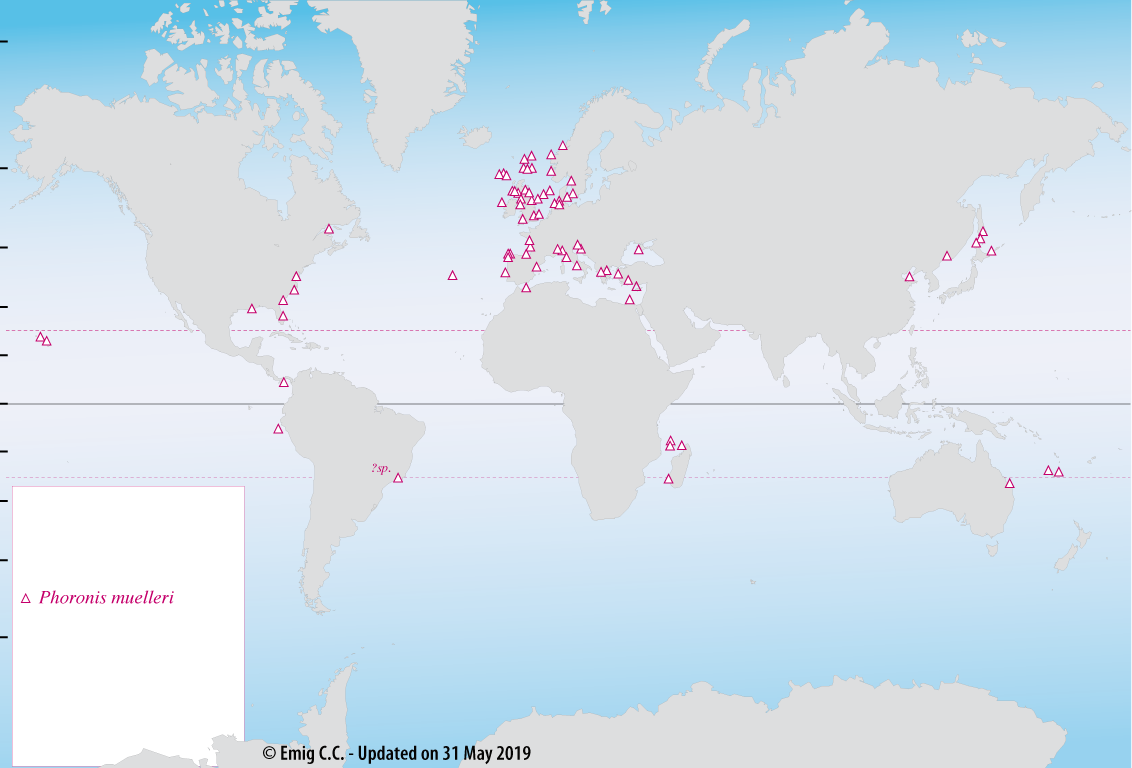| Phoronis muelleri Selys-Longchamps, 1903 Larva: Actinotrocha branchiata Müller, 1846 |
 ° References of the most recent published diagnoses
| ||||||
| Diagnosis | ||||||
|
Last update: June 24, 2004
Extended specimens up to 120 mm in length, 0.2-1 mm in diameter.
Sexual reproduction dioecious; females shed ova freely into the seawater; males have large, glandular lophophoral organs. Asexual reproduction by transverse fission. Phoronis muelleri penetrates vertically into muddy to sandy sediments with a high organic content and often with coarse particles of detritus and in the water column suspended material. The vertical distribution extends from the intertidal zone to about 400 m, but is mainly between 10 and 60 m. Densities may reach ca. 3000 ind.m-2. P. muelleri is frequently recorded in Macoma and Amphiura communities.
Phoronis muelleri is a cosmopolitan species: the distribution is represented below on the map. Type-locality: Helgoland (Germany) Last update: May 31, 2019  |

|
Bibliography on Phoronis muelleri |


